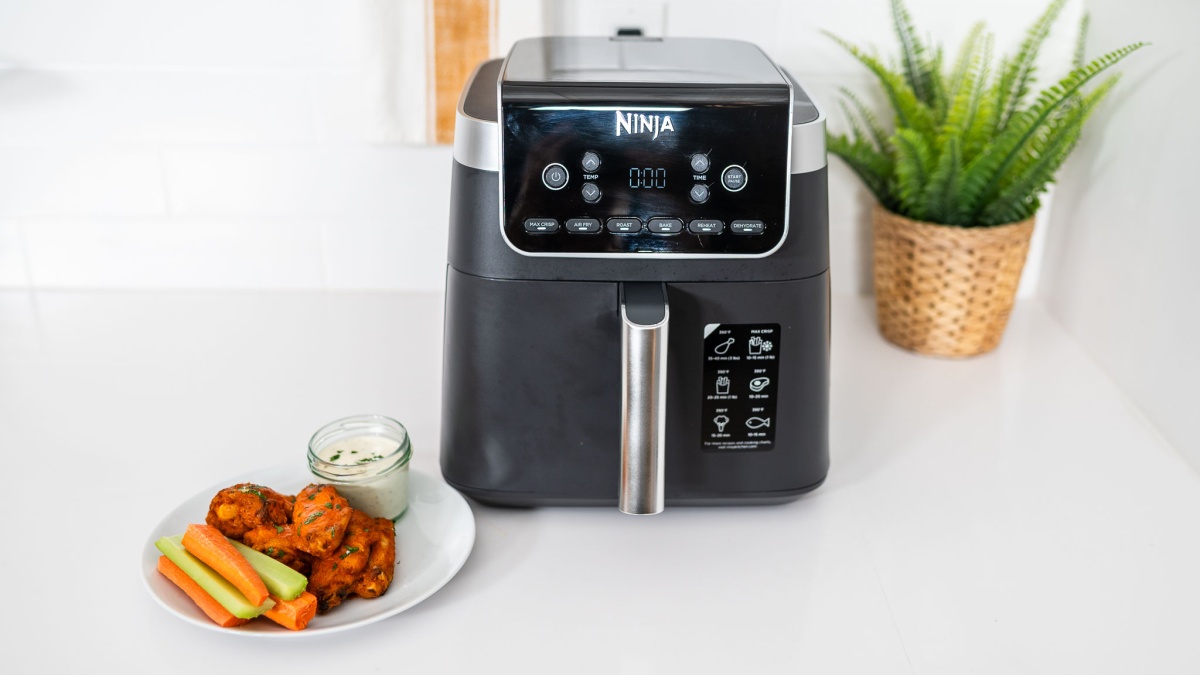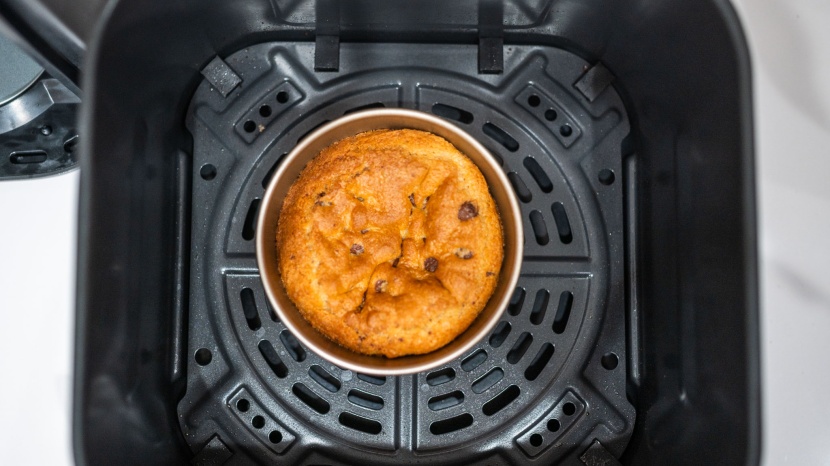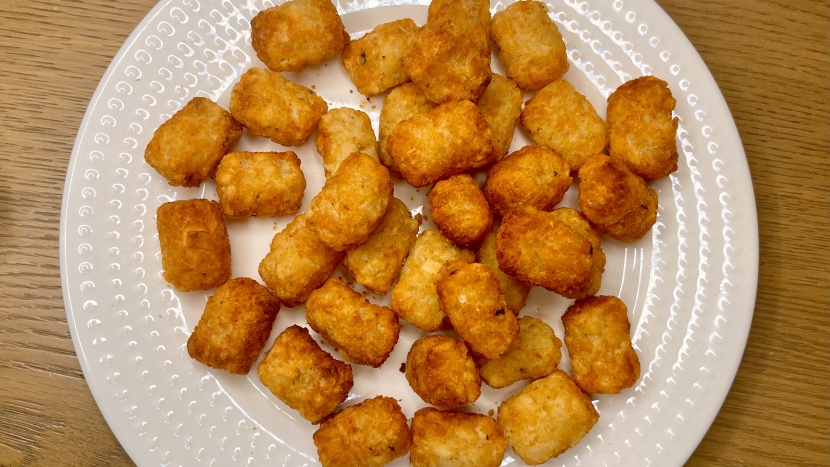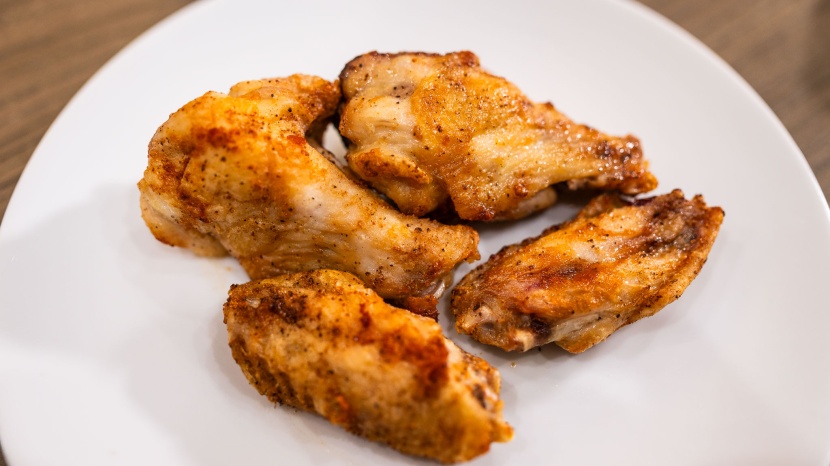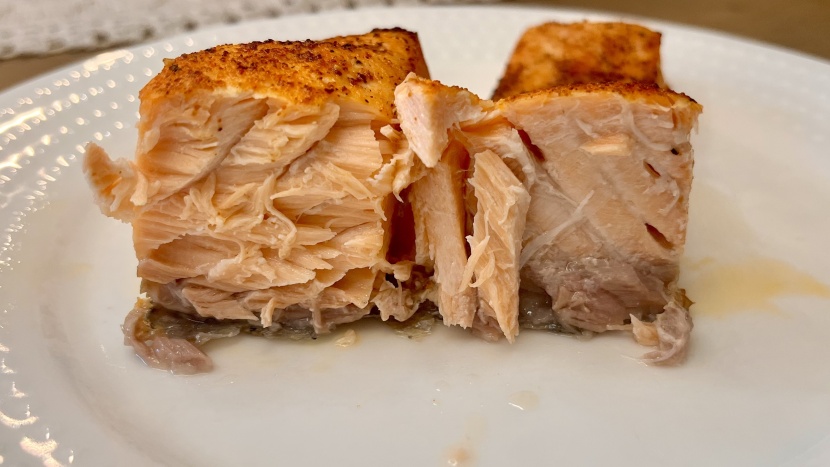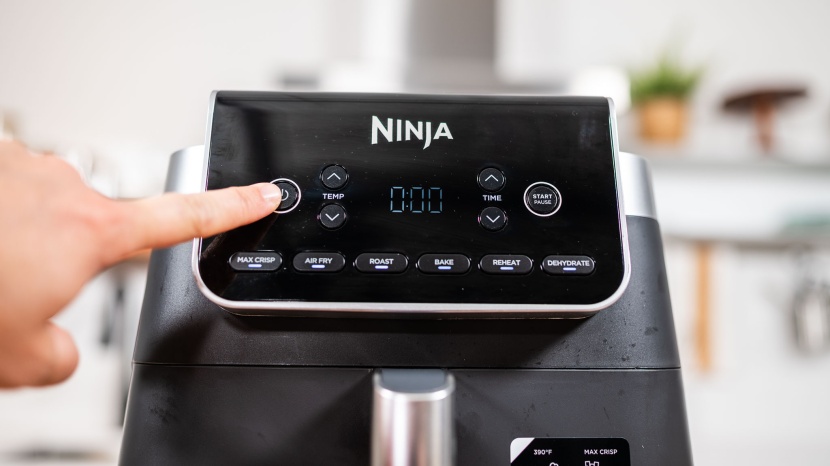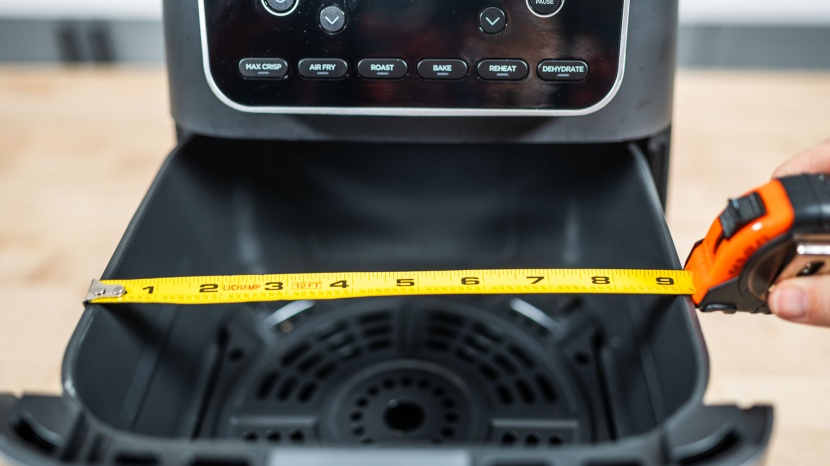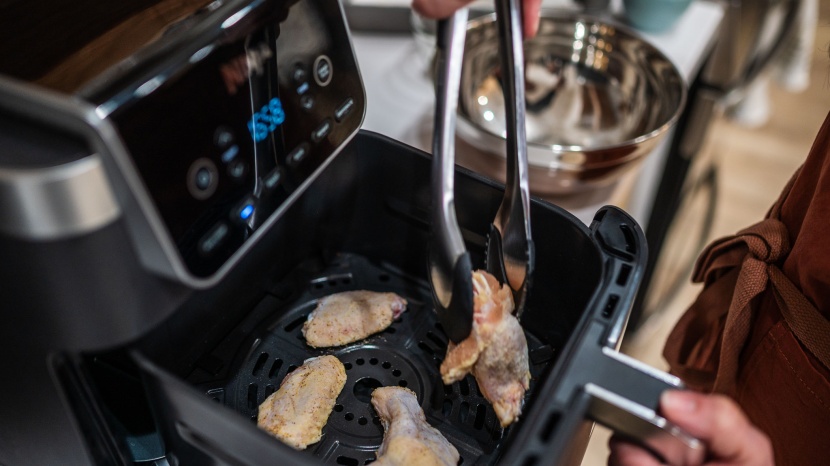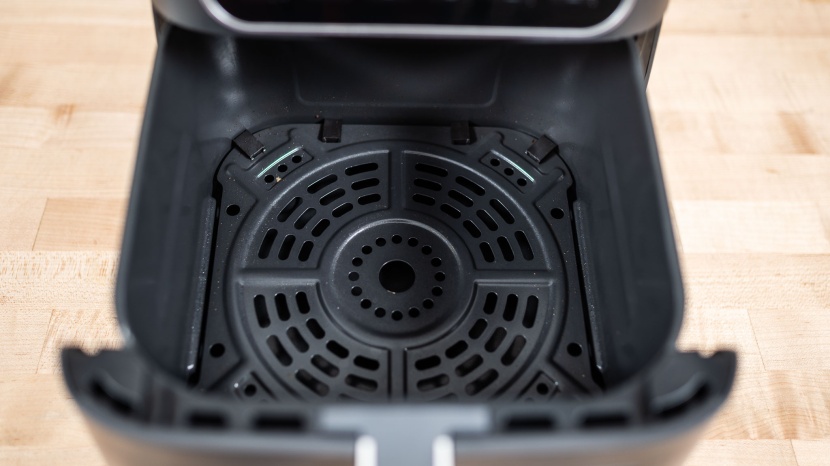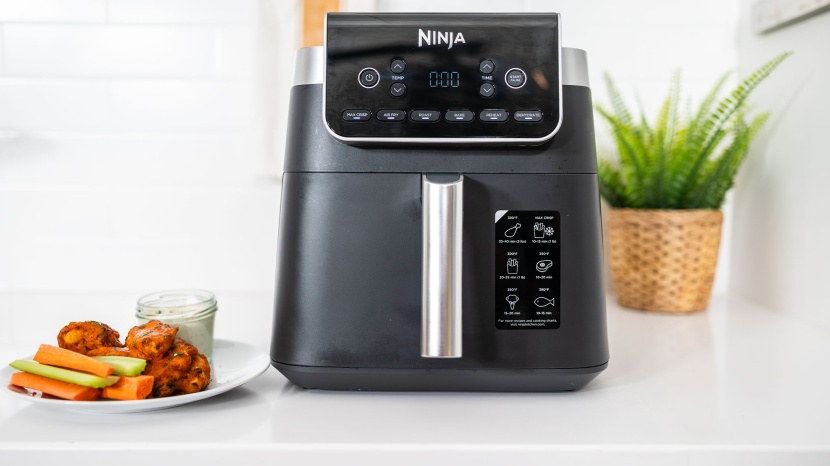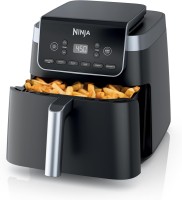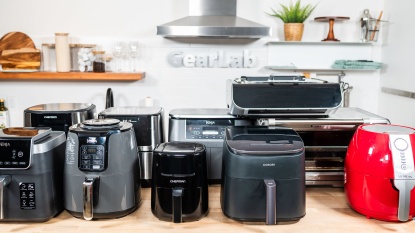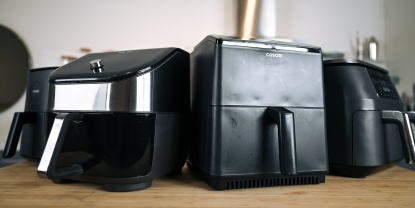
Our Verdict
Our Analysis and Test Results
With its 6.5-quart capacity, the Ninja Pro XL 6.5 Qt aims to serve families while maintaining a semi-compact footprint of 11" x 14".
Cooking Quality
The Ninja Pro XL delivered mixed results in the cooking quality tests, showing both strengths and areas for improvement across different food types.
The Ninja Pro XL produced some of the tastiest potatoes during testing. Following the manual's recommendation for a 3-minute preheat, we achieved a nicely golden, thin, crispy exterior with a pleasantly fluffy interior that wasn't overly dry like some other Ninja models we've tested.
The main drawback was uneven browning, with some portions darker than others. This likely could have been improved with more frequent shaking during cooking, but since this unit lacks a shake reminder, it's easy to forget this crucial step.
For the chicken wing test, we used a modified version of a popular recipe with baking powder and spice rub, cooking one pound of similarly-sized wings at 400°F for 15-18 minutes with flipping every 5 minutes. The Ninja Pro XL produced wings with pretty good browning and a pleasant, moist interior.
When cooking salmon fillets with simple seasoning, the Ninja Pro XL again showed its tendency to run hot. The fish came out with nice browning and good crispiness on the surface, but was noticeably drier than salmon cooked in other units. The lack of visible moisture and slightly overcooked texture reinforced our observation that this air fryer's temperature calibration runs high, requiring users to adjust cooking times and temperatures accordingly.
Cooking Speed
The Ninja Pro XL is relatively fast at cooking compared to other air fryers, likely because its temperature runs a bit high. However, the 3-minute preheat requirement adds to the total cooking time. For the French fry test, after the preheat period, the unit required 16 minutes of cooking time, which is about five minutes less than other air fryers we tested.
When cooking salmon, it took 12 minutes to reach the target internal temperature of 145°F after the initial preheat. These times are reasonable for an air fryer of this capacity, though users should factor in the mandatory preheat time when planning meals.
Temperature Accuracy
During the 20-minute temperature logging session at a set temperature of 400°F, the unit consistently ran hot with an average temperature of 410.3°F. This 10-degree variance is significant enough to affect cooking results, as we observed in the food tests with slightly drier outcomes across all categories.
Beyond pure accuracy, the temperature control system itself feels poorly designed. Temperature adjustments happen at irregular intervals ranging from 5 to 15 degrees, making precise temperature control challenging. Most frustratingly, there's no temperature selection available between 400°F and 450°F, creating an odd gap in the range that limits cooking flexibility. The unit can reach 450°F, but you can't select intermediate temperatures in that range.
The exterior temperature capped out at 119°F during my testing, staying well below the 140°F burn threshold, so safety isn't a concern when handling the unit during operation.
Ease of Use
The Ninja Pro XL offers a straightforward user experience with physical buttons and separate controls for time and temperature. The interface is intuitive enough for first-time users, though it lacks some modern conveniences that have become standard on competing models.
The unit includes six cooking presets: Max Crisp, Air Fry, Roast, Bake, Reheat, and Dehydrate, covering most common cooking needs. The Max Crisp setting, which operates at 450°F, provides notably faster and crispier results when cooking times are adjusted appropriately and the food is shaken frequently.
However, several missing features detract from the user experience. The unit doesn't automatically pause when you pull out the basket, which has become a standard safety and convenience feature for many competitors. There's also no shake alarm to remind you to redistribute food during cooking, which would have helped with the uneven browning we experienced in testing.
Cleaning is straightforward, with parts that wash easily by hand. The crisper plate can be used in two different positions, adding some versatility to cooking options. The unit includes a recipe book to help users get started with different cooking techniques.
One concerning aspect is that the drawer coating scratches easily, which could become a long-term durability issue with regular use.
Should You Buy the Ninja Pro XL 6.5 QT?
The Ninja Pro XL 6.5 Qt is a decent choice for families who need larger cooking capacity without wanting to sacrifice significant counter space. Its PTFE-free cooking surface addresses health concerns that many consumers have about traditional non-stick coatings.
The straightforward interface makes it approachable for air fryer newcomers who want something simple to operate. However, the temperature control limitations and tendency to run hot mean you'll need to adjust recipes and cooking times, which may frustrate users looking for precise, consistent results.
What Other Air Fryers Should You Consider?
If you're looking for better temperature accuracy and more precise controls, consider the Cosori TurboBlaze, which offers large capacity cooking with more reliable temperature management and additional convenience features that the Ninja lacks. For those who want to stick with the Ninja brand but don't mind a slightly smaller capacity, the standard Ninja Air Fryer makes delicious poultry, fish, and fried vegetables with better overall consistency and fewer of the control quirks.
| Awards | |
|---|---|
| Price | $180 List Check Amazon (on sale!) |
Overall Score  |
|
| Star Rating | |
| Bottom Line | A large capacity air fryer that doesn't take up a lot of space and makes crisp, juicy chicken wings |
| Pros | No PTFE on cooking surface, simple interface, large capacity without a large footprint |
| Cons | Limited temperature controls, doesn't auto-pause when removing basket, no shake alarm |
| Rating Categories | Ninja Pro XL |
| Cooking Quality (50%) | |
| Cooking Speed (25%) | |
| Temperature Accuracy (15%) | |
| Ease of Use (10%) | |
| Specifications | Ninja Pro XL |
| Measured Dimensions | 11.2" x 11.7" x 14.1" |
| Capacity | 6.5 qt |
| PTFE in the cooking surface coating? | No |
| Shake Alarm | No |
| Accessories | None |
| Max Outside Temperature | 119 |
| Measured Cooking Area | 74.8 sq in |
| Window | No |
| Air Fry Temp Range | 300 - 400 |
| Dishwasher Safe Components | Yes |
| Power Consumption | 1750 watt |


